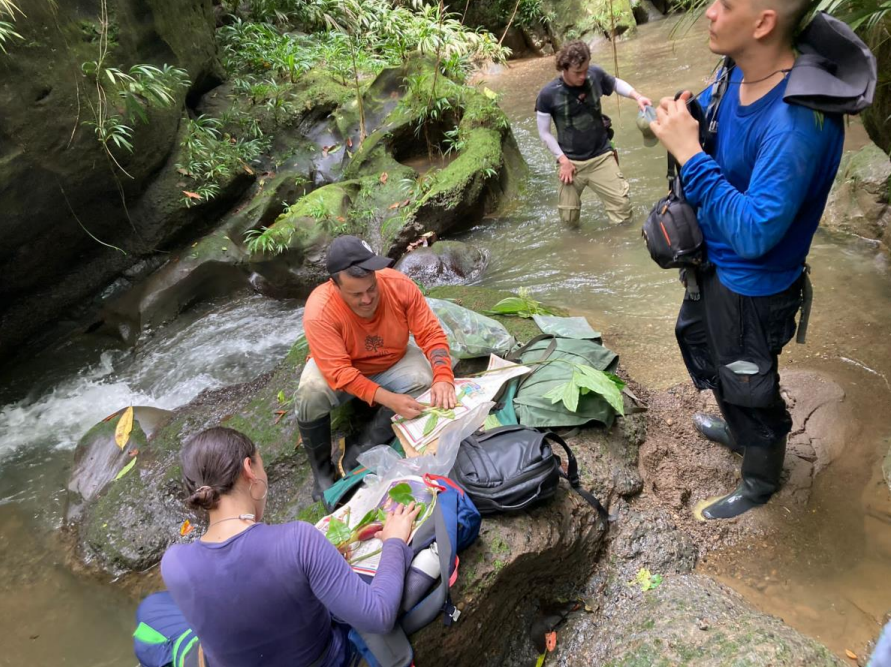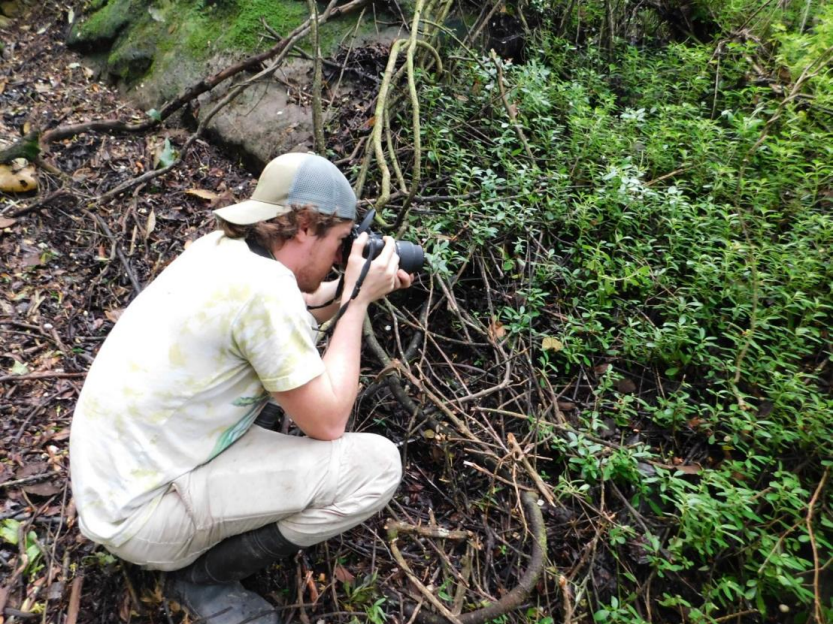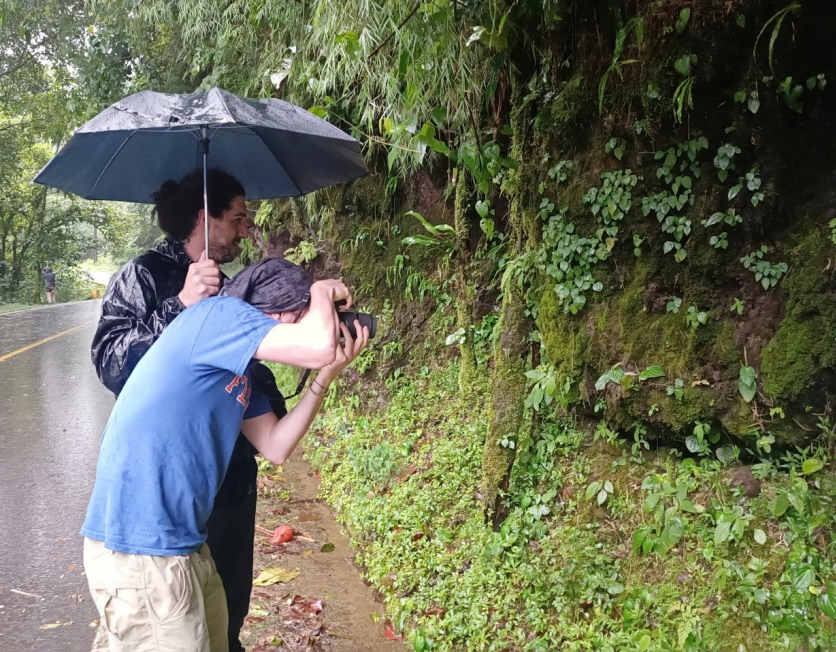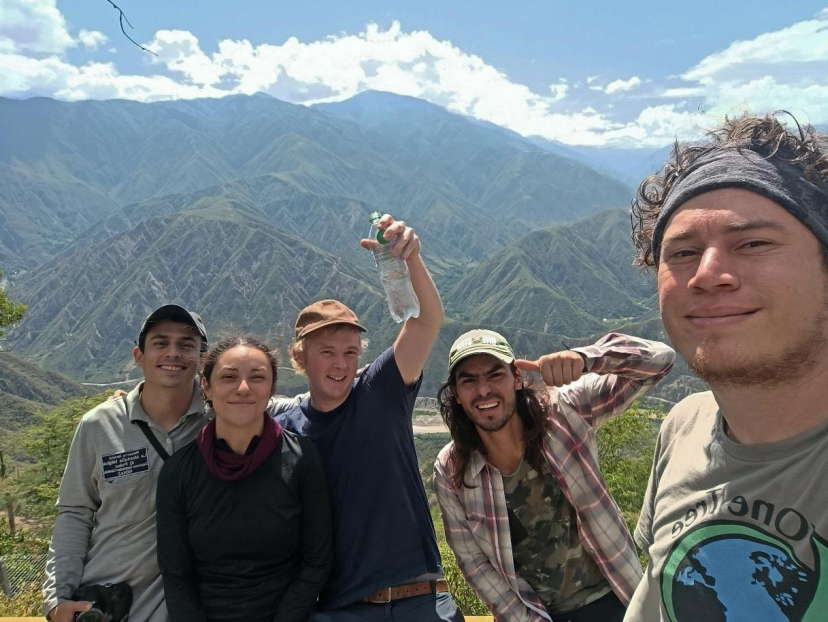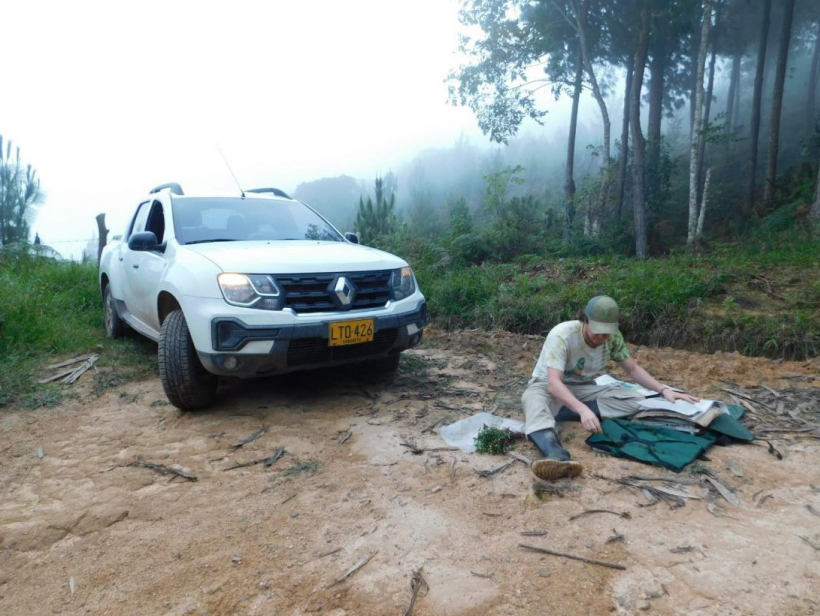1. Objectives
- Build a phylogenetic hypothesis with genomic DNA sequence data to investigate relationships in the subgenera Erasmia and Multipalmata. In order to build this phylogeny, I did fieldwork in Colombia to document as much species of Peperomia as possible of these to subgenus. The known phylogeny established a classification of a limited sampling of just one and 23 species of Erasmia and Multipalmata respectively, which is not sufficient for a
conclusive understanding of the classification, relationships, and evolution of both groups into Peperomia. - Resolve species limits: Dozens of undescribed species of ¨Peperomia subgenus Multipalmata are distributed in Colombia. Based on herbarium specimens, live photos, and fieldwork in unexplored regions, there are several new species to science from Colombia to be documented in the field and described.
2. Brief description of study area
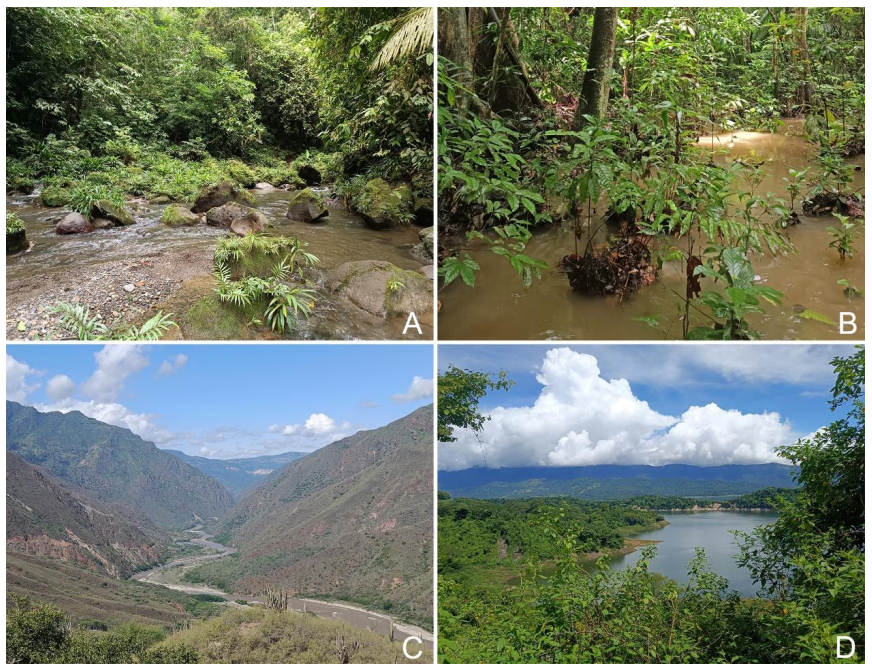
Colombia is one of the most biodiverse countries in the world, boasting an extraordinary range of plant species due to its varied climates and geography. The country’s unique topography, which includes the Andes mountains with three different ranges, plus Páramos, Amazonia, Chocó, Caribbean, Llanos, Magdalena and Cauca valleys, Guajira desert, and Sierra Nevada de Santa Marta, creates diverse ecosystems that support an astonishing variety of flora (Bernal et al. 2015). The Andes, the region where I carried out this fieldwork, with their altitudinal gradient, are particularly rich in species, housing numerous endemic plants that have adapted to specific microclimates. This incredible diversity reflects Colombia’s position as a bridge between Central and South America, as well as its wide range of ecosystems from lowland rainforests to high-altitude ecosystems.
3. Materials and methods
Fieldwork was carried out for 15 days allowing me to collect species of Erasmia and Multipalmata subgenus inside Peperomia. Field trip locations were focused on Antioquia (Chigorodó), Santander (Chicamocha canyon and Magdalena Medio), Boyacá (Santa María), and Cundinamarca (Vereda San Antonio). Photographs, herbarium specimens, and DNA material were taken from all species collected. Collections were made in quadruplets to be deposited at the JAUM, HUA, COL, and the fourth duplicate will be sent to the University of Florida Herbarium (FLAS). The scientific collection permit was already acquired with the collaboration of Dr. Álvaro Idárraga from Jardín Botánico de Medellín (JAUM).
4. Main results
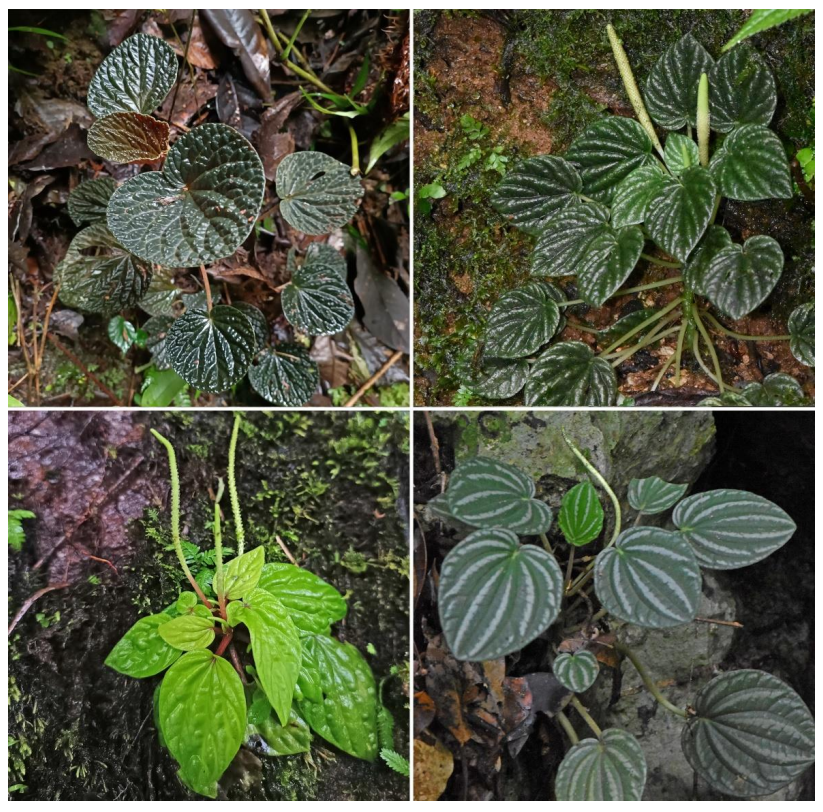
June-July 2024.
- A total of 64 specimens distributed in 56 species of Peperomia were collected and documented during the 15 fieldwork days in Colombia. From those, a total of 20 species belongs to the subgenus Multipalmata and Erasmia. Understanding de taxonomy, morphology, and species limits will allow for conservation organizations and government agencies, to establish policies in favor of the environment and provide a better understanding of conservation priorities.
- Four new species to science were found. Discovering new species helps in understanding the full range of biodiversity on Earth (Fig. 2). This knowledge is crucial for conservation efforts and can provide valuable insights into biology, ecology, and evolution
- Colombia is a major center of diversity of every group of organisms in general, including the Neotropical plants, but especially for Peperomia. More than 200 type localities of accepted and endemic species plus 80 more widespread species of the genus are distributed in the country (Ulloa-Ulloa et al 2017), from which 44 are related to Erasmia and Multipalmata. Nevertheless, no taxonomic work or a comprehensive list of Peperomia is currently available. These finding will help to establish a first list of this genus for the country.
- Carried out this project in Colombia helped me to find more species to add in the most extensive sampling to date for study the genus Peperomia, either the taxonomy and reconstruct the phylogeny of the Erasmia and Multipalmata groups, and these data will be combined with broader efforts of genus-wide phylogenomic research, resulting in multiple peer-reviewed publications. This increased sampling will also provide insights into understanding the evolution of traits and allow us to examine the spatial and temporal context of the evolutionary history in this megadiverse genus.
5. Challenges to original proposal
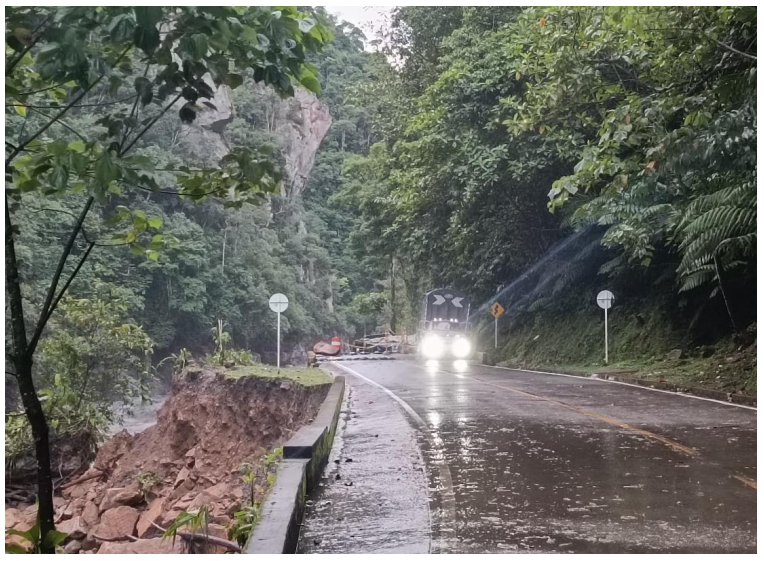
Conducting botany fieldwork in Colombia presents several significant challenges, primarily due to the country’s complex geography and its socio-political conditions.
A. Challenging Terrain and Accessibility: Colombia’s diverse landscapes, including dense rainforests and remote areas, make fieldwork physically demanding and logistically complex. Some of the places visited were difficult to access, requiring long treks through challenging terrain. This limited my fieldwork time and sometimes complicate the transport of collected specimens.
B. Environmental Conditions: Strong rainfall produces landslides that disrupt the fieldwork, causing delays in the itinerary (Fig 3).
C. Security and Political Issues: One of the regions visited have historically been affected by armed conflict, illegal activities such as drug trafficking, and land disputes. Visiting one are in Antioquia, we were notified that we cannot entered to one specific area once we arrived close to the place due to the armed conflict. I was not able to find the plants that I was looking for to save the physical integrity. These issues can pose significant risks to researchers, limiting access to certain areas or requiring additional security measures.
6. Opportunities of support local herbaria
During the visit of the herbarium of the University of Antioquia in Medellín, I had the chance to give a lecture of my explorations and findings around Colombia to a group of researchers and students of this amazing group of plants that I am working on right now (Fig. 4).
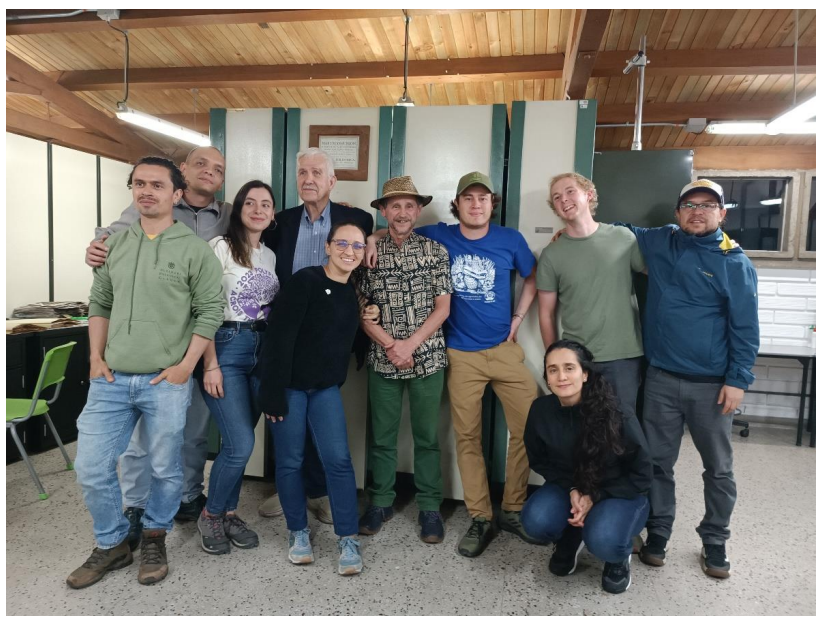
Literature cited
Bernal, R., Gradstein, S. R., & Celis, M. (Eds.). 2015. Catálogo de Plantas y Líquenes de Colombia. Bogotá: Instituto de Ciencias Naturales, Universidad Nacional de Colombia.
Ulloa-Ulloa et al. 2017. An integrated assessment of vascular plant species of the Americas. Science 358: 1614–1617. https://doi.org/10.1126/science.aao0398
José Esteban Jiménez is a graduate student pursuing a Ph.D. through the College of Liberal Arts and Sciences, Department of Biology, advised by Dr. Lucas Majure, Assistant Curator of the Herbarium here at the Florida Museum.
The 2024 Summer Student Travel Awards are supported by the FLMNH Department of Natural History, including funds from the Louis C. and Jane Gapenski Endowed Fellowship and the B.J. and Eve Wilder Endowment. If you would like to help support this fund for future student awards, please go to:
Louis C. and Jane Gapenski Endowed Fellowship
B.J. and Eve Wilder Endowment
